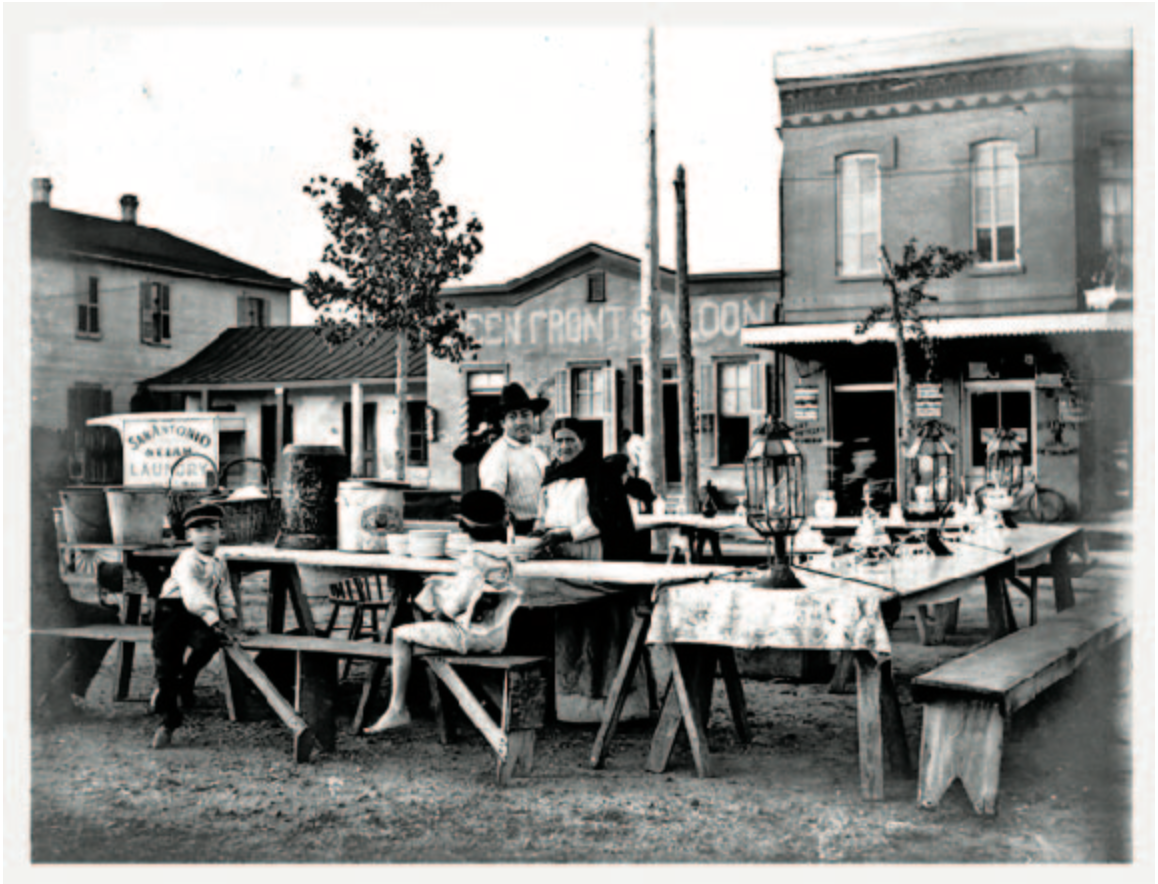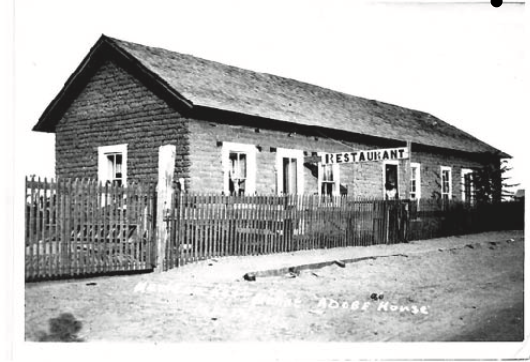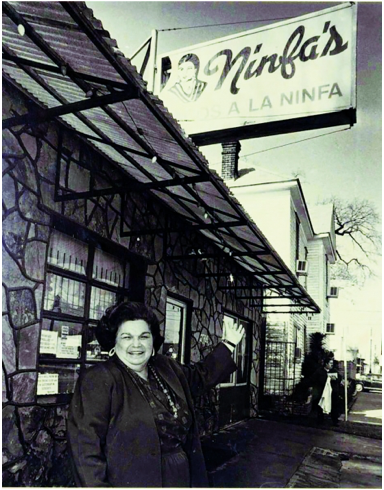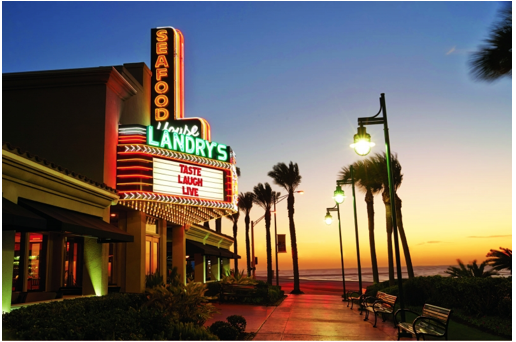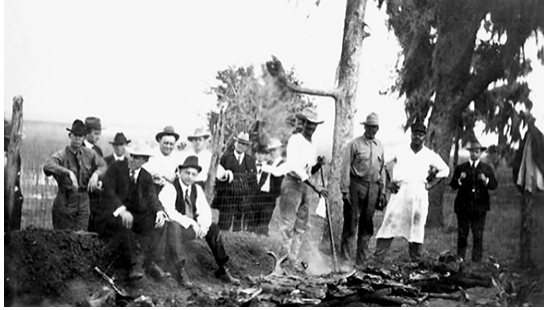By Dotty Griffith
What do Texas' three iconic food groups -- Tex-Mex, barbecue, and chicken fried steak -- have to do with six flags and five states?
Melding the six flags that have flown over Texas with five sub-states or regions cooks up a distinctive Texas cuisine; a veritable state stew, gumbo, or chili — take your pick — that reflects a land and its people. Because Texas is so big and encompasses so many different climates, terra, flora, and fauna, there are regional variations on even the most basic of Texas dishes. Similarly, the influences of indigenous people, settlers, and immigrants greatly shaped the foods we think of as Texan.
Within broad similarities, regional differences abound. That’s one reason stacked enchiladas are very much a part of West Texas, that is, Marfa north to El Paso, while rolled enchiladas define enchiladas south of the Big Bend to the tip of Texas, as well as most of the rest of the state and the Tex-Mex universe.
Barbecue in East Texas reflects more Southern and African-American traditions, while barbecue in the Texas Hill Country draws heavily on the smoked sausage–making customs brought by a wave of German settlers, beginning in the early 1800s. East Texas ’cue is often served dripping with a sweeter-profile sauce than that found in the Hill Country, where smoke is a dominant seasoning and sauce (on the side) isn’t nearly as sweet. Then there’s chicken fried steak with white gravy, a staple of Texas cafes from the Panhandle to Brownsville, and El Paso to Texarkana. The basic idea is the same — a pounded piece of lean, tough beef, battered and fried — but with regional differences within that basic technique.
Not surprisingly, Tex-Mex ranks high on the palates, and in the hearts, of Texans. Moreover, Tex-Mex, recognized all over the United States and in many parts of the globe, is Texas’ culinary gift to the world. Beloved in Paris, France, and Paris, Texas, Tex-Mex has spread far beyond the borders of the state.
Still, no place loves Tex-Mex as much as Texas. Yelp, the website of people’s choices and snarky, sometimes mean, and just plain stupid comments, calculated that Tex-Mex is the most popular cuisine in Texas, in terms of the number of restaurants. Cajun ranks second; and barbecue third, as reported in the Huffington Post.
To compile that information, Yelp calculated the most common cuisines in Texas based on the restaurant listings on the site. The rankings reflect the percentage of total restaurants in the state represented by each cuisine. Yelp’s review service uses information pulled by third-party data providers from public records and other sources in order to create its online restaurant listings. (Are there really that many Popeye’s and Pappadeaux restaurants in Texas?)
The same Yelp report noted that Tex-Mex is 174 percent more popular in Texas than the national average; Cajun, 171 percent; barbecue, 80 percent. Where’s the other Texas food icon, chicken fried steak? It didn’t make the list, but it’s still a major Texas food group in my opinion, although considered by many to be a dying art form. Sadly, most chicken fried steaks served up today go from freezer to deep fryer instead of being hand-pounded to tenderize a piece of round steak, then breaded or battered to order. Be that as it may, chicken fried steak — even as a handmade rarity — is recognized as a distinctly Texas food thang.
To truly understand the state and its food, let’s take a look at some of the influences:
- THE 6 FLAGS: Spain, France, Mexico, Republic of Texas (Lone Star flag), Confederacy, and United States of America.
- THE 5 CULINARY SUB-STATES: Let’s begin at the beginning, with the often-talked-about provision that many people mistakenly believe is in the Texas Constitution that allows for the division of Texas into five states. Actually the 5-for-1 proposition is embodied in the March 1, 1845, Congressional Joint Resolution for Annexing Texas to the United States. The resolution allows for new states “of convenient size,” not to exceed four, to be carved out of the whole. That clause is interpreted to mean one state, called “Texas,” plus four within the distinctive boundary profile recognized worldwide as Texas.
To help us understand the regions of Texas cuisine, let’s divide our great state into five mini-culinary states and match the flags.
1. Tex-Mex Land — Spain and Mexico
2. Coastal Bend — France
3. New Texas — Republic of Texas
4. The Old South East — Confederacy
5. Cowboy Country — United States and Lone Star flags
Now, let’s take a closer look at each of the five culinary states of Texas.
Tex-Mex Land
We’ll start at the beginning, in the cradle of Texas cuisine: South Texas and San Antonio. The official state dish, chili con carne, is a meat stew flavored by dried, ground chile peppers. This totally Texas dish reflects Tejano cooking — Native American, Spanish, and Mexican. The chili queens of the Spanish mission town of San Antonio made it famous. For more than 100 years, women would arrive at twilight in the plazas of San Antonio, where they cooked chili over open fires and served it outdoors at makeshift tables. Texians, the term that distinguished Anglo-American Texans from Tejanos (Mexican Texans), ate it up, as did Tejanos.
What we’re calling Tex-Mex Land, the vast region from Brownsville to San Antonio to El Paso, bordered on the west by the Rio Grande and Mexico, is the Garden of Eden for Tex-Mex: nachos, flautas, tamales, tacos, enchiladas, refried beans, Mexican red rice with tomatoes, and, of course, fajitas. Chili con carne and fajitas are the truest Tex-Mex dishes, more Texas than Mexican.
Fajitas, commercialized and popularized by Ninfa Laurenzo (1924–2001) at her Ninfa’s restaurant in Houston, can be traced back to the vast ranches of South Texas. Mama Ninfa, as she came to be known, grew up in South Texas where vaqueros (Tejano ranch hands) made something out of nothing. In this case, grilling what was once a throwaway cut of beef, the skirt steak, into delicious mesquite-flavored strips of beef. Fajitas were a very local food tradition until Ninfa Laurenzo started serving them in her restaurant. Originally beef, now fajitas can be served as grilled chicken, seafood, or vegetables. Like many other Tex-Mex favorites, fajitas are finger food, with the strips rolled into flour or corn tortillas and eaten out of hand.
And speaking of tortillas, flour tortillas are another Tex-Mex melting-pot creation. American and European settlers brought wheat flour with them, and soon the classic Mexican corn tortilla made of corn flour, i.e. masa, was adapted to a flat bread made of wheat flour.
Although Tex-Mex can be traced to San Antonio and South Texas, two major old-school Tex-Mex chains, El Fenix and El Chico, were developed in the Dallas area. The very fact that salsa beat out ketchup as America’s favorite condiment starting in 1992 pretty much tells the story of the ascendancy of Tex-Mex.
Coastal Bend
Cajun and Creole cuisines from Louisiana and New Orleans manifest considerable influence from Beaumont and Houston and all along the Gulf Coast. Certainly there are some Mexican seafood influences as well, but the many Cajun- and Creole-inspired dishes and traditions dominate along the Texas Gulf Coast.
Here, let’s distinguish between Cajun and Creole. In a nutshell, Creole cuisine is the classic cuisine prepared in New Orleans, reflecting French, Spanish, Caribbean, and African traditions. Cajun is the rest of the state, reflecting traditions and ingredients available to Les Acadians, who immigrated from French Canada to Louisiana’s coasts, bayous, and prairies.
The post-Katrina diaspora gave a major boost to Cajun food in Texas, as refugees of the 2005 category-5 hurricane found new homes all over the state, particularly in Southeast Texas. Seafood gumbo, shrimp, crab, and crawfish boils; po’boy sandwiches; and boudin (rice and meat-stuffed sausage) are staples all along the Texas Gulf Coast.
But prior to Katrina, Cajun and Creole influence on Texas dates to the migration of Louisiana ranchers and their ranch hands in the early 1800s. They
liked Texas’ coastal prairies and salt grass flats for running cattle. The 1901 discovery of oil at Spindletop Hill near Beaumont started attracting Louisiana oilfield workers to the area, including Houston, where much of the industry is headquartered. Naturally, they brought their culinary traditions — wild game, water fowl, and seafood — with them. Various oil booms throughout the 1970s continued to draw workers in the petroleum industry.
In 1976, Louisiana restaurateurs Floyd and Billy Landry opened their first Cajun restaurant in Texas. Immensely successful, they sold what became their chain of restaurants to Galveston native and food industry magnate Tilman Fertitta, who today operates Landry’s Restaurants, Inc., as well as other hospitality entities. After disastrous Hurricane Katrina flooded parts of New Orleans in 2005, restaurateurs, chefs, and other food service workers evacuated to Texas towns and cities. Many stayed to rebuild their lives and livelihoods.
Today, Texans — particularly those in Southeast Texas — love crawfish, shrimp, and crab boils. Texas backyard cooks, like many others in the South and now the rest of the country, use their big seafood boiling pots and propane cookers for another Cajun specialty: fried turkey. Seafood shacks from Galveston Island to South Padre serve gumbo and “blackened” fish fillets, associated with famed Louisiana chef Paul Prudhomme. Blackening refers to the technique of coating fish with a blend of spices, then sautéing in a hot cast iron skillet. The spicy crust turns a brownish black. The increasing popularity of Cajun cuisine throughout the state, particularly along the upper Gulf Coast, reflects the influence of our Louisiana neighbors.
New Texas
Today, the center of Texas, dominated by Austin and the Texas Hill Country, is the land of breakfast tacos and food trucks. Still, the roots of a couple of Texas iconic foods — barbecue and chicken fried steak — run deep in these parts. The Texas barbecue belt runs through towns like Taylor, Luling, Lockhart, and Elgin. This is where the German smokehouse, butcher shop, barbecue tradition rules.
Waves of German, as well as Czech and Polish, immigrants came to Texas in the 30 years before the Civil War and a couple of decades following. They, of course, brought their food traditions and adapted to the land and what it provided. Wurst meet brisket. Butcher shops and smokehouses soon morphed into barbecue emporiums. As usual, barbecue was the technique used to make the tougher cuts, like brisket, tender and palatable.
Pecan wood and oak often get the nod here when it’s time to build or flavor a fire with aromatics. This is the land of dry spice rubs, while mops and basting marinades often carry the seasoning load in East Texas.
Chicken fried steak is eaten and loved all over Texas. It’s thought by some that the roots of this Lone Star favorite go deep in the areas of Texas influenced by the German foodways of immigrants. It’s also a dish that translated well to the Southern penchant for frying, and, of course, all Texans love beef cooked just about any and every way.
No one has made a closer study of chicken fried steak than author Robb Walsh. His Texas Eats: The New Lone Star Heritage Cookbook identifies three kinds of chicken fried steak with slightly different origins. Similar to Southern fried chicken, the East Texas version is dipped in egg and then flour. There are versions in Central Texas made with bread crumbs rather than flour, much like wiener schnitzel. Cowboy style pan-fried steak in West Texas is dredged in flour and then fried, without egg batter.
Fact is, frying battered or floured meat isn’t exactly a new or unique technique. But when it is called “chicken fried steak” and served with white gravy, it is Texas food. The same basic dish, served in Missouri, might be called country fried steak. Finding a fresh, hand-battered chicken fried steak at a Texas restaurant or café today can be a rare treat indeed.
The Old South East
Culturally and economically, East Texas had a lot in common with the antebellum South. Although Texas entered the Union as a slave state, most of the plantations that operated on slave labor were in the eastern part of the state. Many of the settlers who came to Texas were from the upper South, most notably Tennessee, including Alamo hero Davy Crockett. More Alamo defenders were from Tennessee than any other state or country, including Texas. Kentucky is another state where “gone to Texas” became a frequent answer to the question of “Where is ol’ so-and so?” Of course, the lower Southern states also contributed their fair share of adventurers, entrepreneurs, schemers, dreamers, outlaws, and scofflaws. William Barret Travis is one such. The 26-year-old commander of the Alamo deserted South Carolina — and his pregnant wife and son — for Texas, arriving in 1831 where he began his new, although brief, life as a Texan.
There were basically two types of Southerners who found their way to Texas. Many from the mountainous Southern states — Arkansas, Kentucky, Tennessee — were hard scrabblers, call them hillbillies if you insist. Though not everyone from the lower Southern states — Georgia, Alabama, Mississippi, Louisiana — were aligned with wealthy plantation owners and slave holders, many were. Guess who did the cooking in those households? The influence of African-American cooks, many of whom were former slaves, on the South and on Texas can’t be overstated. Their foodways impacted Texas before and well after the Civil War.
Especially when it comes to barbecue, particularly in East Texas, black barbecue masters reigned at roadside stands, church picnics, and fundraisers. Barbecue in East Texas is often a saucy mess, whether you’re eating brisket, sausage, ribs, or chicken. Though wood fuel and sauces may differ from one part of the state to the other, beef brisket is the defining meat of Texas barbecue — the piece de résistance from east to west, north to south. But in the eastern part of the state, where it abuts the Deep South, pork shoulder and whole hogs steal the show. Seems everybody everywhere loves pork ribs.
Frying is truly an art form in the South, as well as in East Texas, where “fry that sucker” is recognized as a recipe. Fried chicken and cornmeal-battered fried fish, particularly catfish, are two of the typically Southern dishes wholeheartedly adopted all over East Texas, both in homes and in restaurants, even today in the era of quinoa and kale.
Boarding house fare or country cooking — a plate with (often fried) meat and gravy, starch (potatoes or rice) and (usually overcooked) vegetables, such as green beans and corn — is typical of this part of the state, as well. Also known as meat-and-three (sides), this tradition finds expression all over Texas but nowhere more than in The Old South East.
White gravy often graces plates of fried chicken and chicken fried steak. It’s a must with mashed potatoes and biscuits. Though made from golden brown pan drippings like most gravies, white or cream gravy is distinguished by the use of milk or cream as the main liquid, not broth or water. Hence, the milky color that differentiates it from pan or brown gravy.
Cowboy Country
The era of big cattle drives came after the Civil War. Texas was back in the Union and selling beef was a major rebuilding effort all over the state. This vast plains area was ripe for settlement. There’s lots of space on these open plains for driving or raising cattle. Stands to reason that cowboy chuck wagon fare and steaks rule menus around here.
Famed rancher and cattleman Charles Goodnight invented the portable cowboy kitchen known as the chuckwagon in 1866 as a way to provision the cowboys who would drive 2,000 longhorns from the Panhandle to Denver. Chuckwagon menus often included black-eyed peas, pinto beans, corn, and cabbage, all very portable and non-perishable. Not surprisingly beef, as well as bison, steaks and stews were common fare. Chiles, garlic, and onion were the main flavoring agents. Fish or frog legs from rivers and lakes provided welcome variety on occasion. Staples like sourdough bread, biscuits, or corn bread and boiled cowboy coffee were always available.
Cowboy chef and restaurateur Tom Perini embodies this era of Texas food in his restaurant and catering operation. Perini Ranch Steakhouse in Buffalo Gap, just south of Abilene, is known for its range of Texas dishes, particularly his signature steaks. In addition to beef served in his restaurant, Perini ships thousands of pounds of his famous smoked beef tenderloin all over the world. Perini’s menu reflects the coming together of all types of Texas cuisines in this region and, today, over much of Texas. Perini serves killer fried chicken, barbecue, chicken fried steak, and grilled steaks. His sides reflect a panoply of homestyle Texas vegetables, stewed green beans and mashed potatoes, and desserts like peach cobbler.
This part of Texas is ground zero for the Saturday night steak special at small town steakhouses, where all-you-can-eat sirloin is the favored fare, especially during fall hunting season when small towns are flooded with dove, deer, quail, and turkey hunters. The Big Texan Steak Ranch in Amarillo is another well-known Texas venue, where big appetites eat free if they can finish off 72-ounces of beef in an hour.
Nothing is more identified with Texas than a big ol’ steak dinner. Even in an era when chefs serve very complex and sophisticated dishes, a prime steak remains a top-tier dining experience. Big cities like Houston and Dallas are home to luxe steakhouses, charging as much as $100 for some magnificent cuts. Smaller towns are the places where family-owned steakhouses may be the only restaurant in town. Yep, they’ll have chicken fried steak, barbecue, and Mexican food on the menu, too.
Texas cuisine is a fascinating blend of old and new. Regional differences abound. Still the big three of Lone Star cuisine — Tex-Mex, barbecue, and chicken fried steak — symbolize the state’s foodways to Texans and wannabe Texans.
Dotty Griffith spent most of her 34-year career with The Dallas Morning News as food editor and restaurant critic. She is the author of nine cookbooks, most about Texas-style cuisine. She hosted a radio show about Texas cuisine, “In the Kitchen with Dotty,” on KRLD radio in Dallas and has written about Texas cuisine for John Mariani’s Virtual Gourmet, The New York Times, Gourmet Magazine, Modern Luxury Magazine Dallas, and Houston Magazine.

